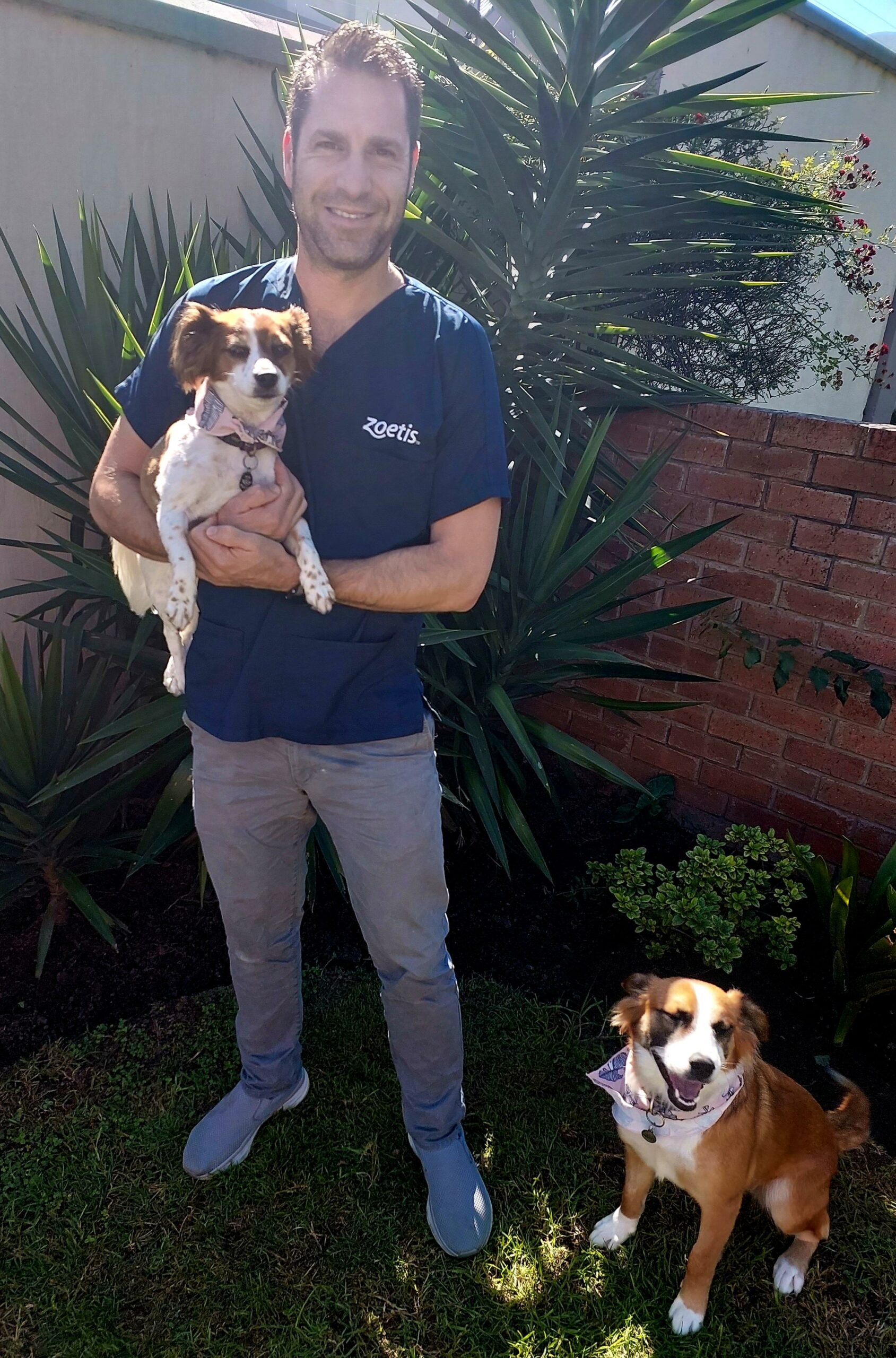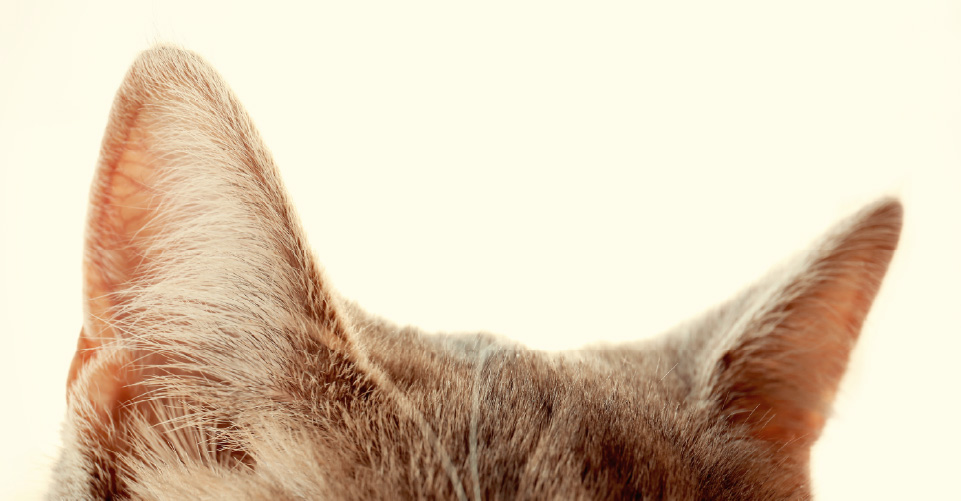Listen up – don't ignore these auditory issues. We asked the experts!
Dr Alan Louw is a Veterinarian in George, with an innate love for animals and the outdoors.
We asked him a few questions we thought you’d want to hear the answers to. Keep on reading to learn helpful information on auditory conditions in pets.
What are some common signs or symptoms of auditory conditions in pets and how can pet owners recognise them?
“Unless a pet is born deaf due to a hereditary condition; signs and symptoms of auditory conditions in pets can be subtle and difficult to recognise initially, but as they progress and worsen, they do become more apparent. Common symptoms would include shaking the head, scratching at the base of the ears, and in more severe cases – tilting of the head and circling when there is inflammation and/or infection in the ear canal. If the hearing is affected, other symptoms may appear, such as disobedience and/or ignoring verbal commands, more pronounced startle reflexes, excessive barking, unresponsiveness to everyday sounds, and sleeping more than usual.”
What are some of the most common auditory conditions that pets can develop and what causes them?
“The most common auditory condition in dogs and cats is hereditary deafness and is associated with white pigmentation and blue eyes. Adult and senior animals are most likely to be affected by otitis (inflammation and/or infection of the ear canal), drug toxicity, noise trauma, tumours (benign or malignant) and age-related hearing loss.”
How are auditory conditions in pets typically diagnosed and what diagnostic tests might be used?
“A good physical and clinical examination can provide clues as to the cause of an auditory condition. Deformities of the ears, abnormal growth of tissue in the canal, and head shaking suggest long-term ear conditions. An otoscope is used for a thorough examination of the ear canal. The ear canal may be obstructed with discharge, debris, or inflammatory tissue. Foreign objects or growths/masses deep in the ear, impacted debris, low-grade infections with parasites, and ruptured or abnormal eardrums can also be seen with an otoscopic examination.
Sometimes, additional tests are required to determine the cause of the auditory problem. Swabs for culture (to identify any infection-causing micro-organisms) can be taken. Biopsies from animals with long-term, obstructive, inflammation of the ear canal may reveal whether tumours are present. Radiographs, CT, or MRI scans may be taken when better visualization of the ear canal, auditory structures, and brain is needed.
Identification of deafness is most accurate with BAER testing (Brainstem Auditory Evoked Response) at a referral or specialist centre.”
What treatment options are available for pets with auditory conditions, and how effective are they?
“Unfortunately, there is no cure for hereditary or age-related deafness. Hearing aids or cochlear implants have proven to have limited effects. There are hearing protection devices that are available for hunting dogs that are exposed to noise trauma. Ototoxic drugs and chemicals can also result in permanent deafness, but it can be reversible, depending on the substance that caused it. If the cause of hearing loss is due to inflammation, infection, or mechanical obstruction (tumours or debris), the hearing can potentially be restored if treated promptly enough before permanent damage to the auditory structures occurs.”
Can auditory conditions in pets be prevented, and what steps can pet owners take to protect their pet's hearing health?
“Only certain auditory conditions can be prevented such as exposure to certain drugs, chemicals, and noise trauma. Auditory testing and informed selective breeding are the only available options to reduce prevalence within breeds. Regular ear cleaning can help reduce the incidence of otitis and helps the owner pick up any blockages or growths in the external ear. If your pet suffers from ear and skin conditions regular veterinary check-ups are required to detect and treat these conditions promptly. This will help to avoid potentially treatable causes of hearing loss.
Deaf animals adapt well and other senses such as vision and touch (vibrations) become heightened and enhanced. Affected animals learn to read and feed off the behaviour of litter mates or other household pets. Obedience hand signals and sign language have been used successfully to improve communication. Owners of deaf dogs should be educated to protect their pets against undetected dangers such as motor vehicles.”
Learn more about our Vet of the Month (VOM).
Dr Alan Louw qualified in 2010, after which he practised in the North West province until he moved to the Southern Cape in 2012. In George, he took part in the opening of the Heatherlands Animal Hospital, where he treats small animals (dogs and cats) and a few exotic species from time to time. He enjoys running, cycling, and golf – especially in the beautiful Garden Route area.

Dr Alan, do you have pets? If yes, what do they eat?
“Yes, I have both dogs and cats. They are all rescued or adopted. Our dogs eat Hill’s and our cats enjoy their Ultracat food.”
What is it about pets that makes you love them so?
“Their pure hearts and unconditional love. They are always there for you and always manage to bring a smile to your face, even after the toughest of days. I love running with our dogs and being outdoors with them. It brings such peace and makes you feel connected to nature.”
Have you always wanted to be a Vet?
“Not at first, I started studying zoology initially, as I wasn’t quite sure what career I wanted to pursue. I was given the chance to apply for Veterinary Science in my second year at university and thankfully, I was accepted. Once I got started with the programme, I never looked back. However, there were members of my family that knew before I did. My grandfather knew from very early on that one day I would become a veterinarian because of my love for all animals.”
Last word from our Vet of the Month
“Deaf pets can be successfully raised and cared for, but more dedication than normal is required. Pets that lose hearing later in life appear to cope well. There is no evidence that hereditary or age-related deaf animals otherwise experience pain or discomfort.”



